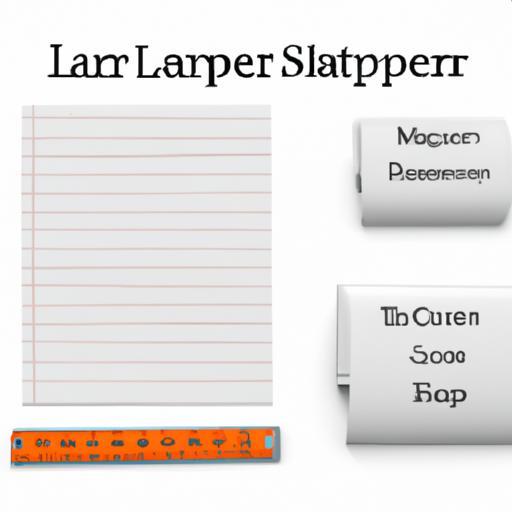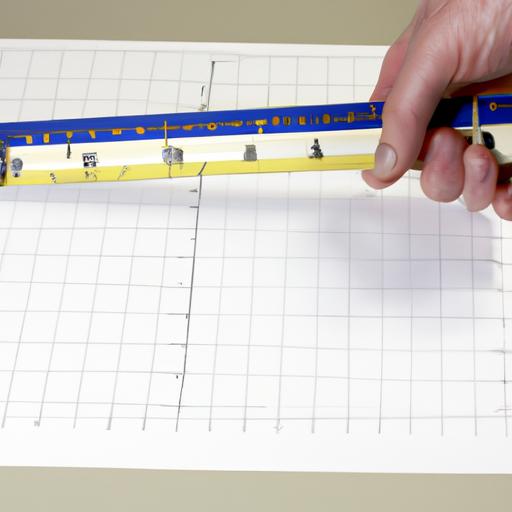What Size is Ledger Paper?
Table of Contents
If you’re in the printing or publishing industry, you’ve probably come across the term “ledger paper” before. It’s a type of paper that’s commonly used for accounting and bookkeeping purposes, as well as for printing large documents like maps and blueprints. But what size is ledger paper exactly, and how does it compare to other paper sizes? This article will explore the different sizes of ledger paper and provide some tips for measuring it accurately.
Standard Sizes of Ledger Paper

Ledger paper comes in several standard sizes, each with its own unique dimensions and uses. The most common sizes are:
11×17 Ledger Paper
11×17 ledger paper is also known as “tabloid” or “B-sized” paper. It measures 11 inches by 17 inches (279mm x 432mm) and is often used for printing newspapers, newsletters, and calendars. It’s also commonly used for printing large documents like posters, maps, and engineering drawings.
8.5×14 Ledger Paper
8.5×14 ledger paper is also known as “legal” or “folio” paper. It measures 8.5 inches by 14 inches (216mm x 356mm) and is commonly used for printing legal documents, contracts, and other business forms. It’s also often used for printing booklets and brochures, as its long and narrow shape is ideal for folding in half and stapling together.
8.5×11 Ledger Paper
8.5×11 ledger paper is also known as “letter” or “A-sized” paper. It measures 8.5 inches by 11 inches (216mm x 279mm) and is the most commonly used paper size in North America. It’s used for printing a wide range of documents, from letters and memos to flyers and posters.
Knowing the standard sizes of ledger paper is essential for selecting the right paper size for your project. Whether you’re printing a legal document, a large map, or a company brochure, choosing the correct size of ledger paper will ensure that your final product looks professional and polished.
Ledger Paper vs. Other Paper Sizes
While ledger paper comes in several standard sizes, it’s not the only paper size available. Other commonly used paper sizes include:
- A4 paper (210mm x 297mm)
- A3 paper (297mm x 420mm)
- Letter paper (8.5 inches by 11 inches)
- Legal paper (8.5 inches by 14 inches)
- Tabloid paper (11 inches by 17 inches)
Each paper size has its own unique dimensions and uses. A4 paper, for example, is the standard paper size used in most countries outside of North America. It’s commonly used for printing documents like letters, invoices, and reports. A3 paper is twice the size of A4 paper and is often used for printing posters, calendars, and large photographs. Understanding the differences between these paper sizes can help you select the right paper size for your project and ensure that your final product looks professional and polished.
Now, write sections 3 and 4
Ledger Paper vs. Other Paper Sizes
While ledger paper has its own unique dimensions and uses, it’s important to understand how it compares to other commonly used paper sizes. Here are some key differences between ledger paper and other paper sizes:
- Letter paper: The most commonly used paper size in North America, letter paper measures 8.5 inches by 11 inches. It’s often used for printing documents like letters, memos, and reports. Unlike ledger paper, which is often used for large documents and maps, letter paper is best suited for smaller documents.
- Legal paper: Legal paper measures 8.5 inches by 14 inches and is commonly used for printing legal documents, contracts, and other business forms. Like ledger paper, it’s a longer and narrower paper size than letter paper.
- A4 paper: A4 paper is the standard paper size used in most countries outside of North America. It measures 210mm by 297mm and is slightly longer and narrower than letter paper. It’s commonly used for printing documents like letters, invoices, and reports.
- Tabloid paper: Tabloid paper measures 11 inches by 17 inches, making it the same size as ledger paper. It’s commonly used for printing newspapers, newsletters, and calendars, as well as large documents like maps and engineering drawings.
Understanding the differences between ledger paper and other paper sizes can help you choose the right paper size for your project and ensure that your final product looks professional and polished.
How to Measure Ledger Paper Size
Accurately measuring the size of ledger paper is essential for ensuring that you select the right paper size for your project. Here’s how to measure ledger paper:
- Lay the sheet of paper flat on a surface.
- Use a ruler or tape measure to measure the width of the paper from one edge to the other.
- Use the same ruler or tape measure to measure the height of the paper from one edge to the other.
- Write down the measurements in inches or millimeters.
It’s important to use a ruler or tape measure that’s accurate and easy to read. A steel ruler or a digital tape measure are good options. Avoid using a flexible tape measure, as it can be difficult to get an accurate reading.
By following these simple steps, you can measure the size of your ledger paper accurately and ensure that you select the right paper size for your project.
Common Misconceptions about Ledger Paper Size
Despite its widespread use, there are still a few common misconceptions about the size of ledger paper. Some of these misconceptions include:
1. Ledger paper is always 11×17 inches
While 11×17 inches is a standard size for ledger paper, it’s not the only size available. Ledger paper also comes in 8.5×11 inches and 8.5×14 inches, which are commonly used for printing legal documents and business forms.
2. All printers can handle ledger paper
Not all printers are capable of handling ledger paper, especially larger sizes like 11×17 inches. Before printing on ledger paper, it’s important to check your printer’s specifications to ensure that it can handle the size and weight of the paper.
3. Ledger paper is only used for accounting and bookkeeping
While ledger paper is commonly used for accounting and bookkeeping purposes, it’s also used for a wide range of other applications, including printing maps, blueprints, and other large documents.
4. Ledger paper is always thicker than regular printer paper
While some types of ledger paper are thicker than regular printer paper, not all ledger paper is the same. Some types of ledger paper are thinner and more lightweight, while others are thicker and more durable.
Conclusion
In conclusion, knowing the correct size of ledger paper is essential for selecting the right paper size for your project. Understanding the different sizes of ledger paper and how they compare to other commonly used paper sizes can help you create professional-looking documents that stand out from the crowd. By debunking common misconceptions about the size of ledger paper, we can ensure that everyone has access to accurate information and can make informed decisions about their printing and publishing needs.

